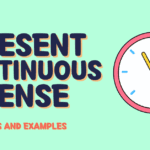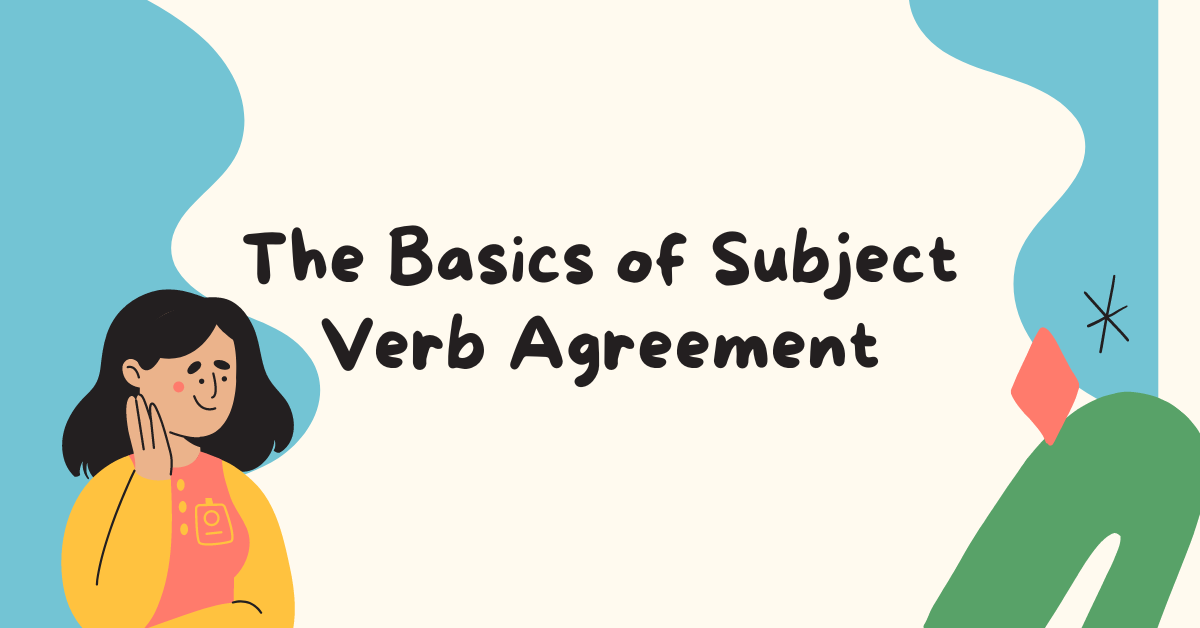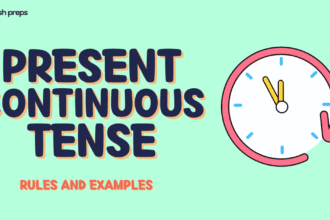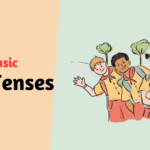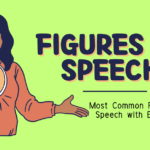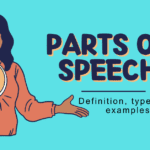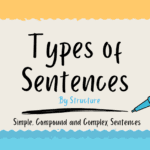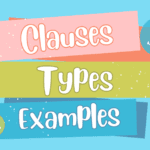Subject-verb agreement refers to the correct matching of a verb with its subject in a sentence. In English, the verb must agree with the subject in number and person. This means that if the subject is singular, the verb must also be singular, and if the subject is plural, the verb must also be plural. Additionally, the verb must be conjugated to match the person of the subject.
Here are examples of subject-verb agreement, with five examples of singular subjects and verbs and five examples of plural subjects and verbs:
| Verb | Singular subject and verb | Plural subject and verb |
|---|---|---|
| Bark | The dog barks at the mailman. | The dogs bark at the mailman. |
| Sing | She sings in the shower. | They sing in the shower. |
| Write | The student writes a paper for class. | The students write papers for class. |
| Swim | He swims every morning. | We swim every morning. |
| Fall | The apple falls from the tree. | The apples fall from the tree. |
Subject-verb agreement is one of the important concepts. It is the key to be fluent in writing and framing grammatically correct sentences. I know this seems easy when speaking in simple subject/verb sentences, but it is a little more complicated when your sentences get more complex. Thankfully, this article is going to share with you some fundamental tips and common mistakes to avoid.
Subject-Verb Agreement Rules with Examples
Let’s discuss subject-verb agreement rules with examples.
Subjects linked with Conjunction “and”
Here is the rule for subject-verb agreement when the subject is a compound subject (consisting of two or more nouns or pronouns linked by “and”):
1) If the compound subject is made up of two nouns or pronouns that are joined by “and” and both refer to the same person or thing, the verb is singular.
Here are some examples:
- My friend and mentor is visiting me this weekend.
- The CEO and founder of the company has announced a new policy.
- The artist and creator of the mural is being interviewed on TV.
2) If the compound subject is made up of two or more nouns or pronouns that are joined by “and” and each refers to a different person or thing, the verb is plural.
- My friends and family are coming to visit.
The subject, “friends and family,” refers to more than one person, so the verb, “are,” is plural.
Here are some examples of compound subjects joined by “and” that refer to different people or things, thus taking a plural verb:
- The teacher and the students are attending the seminar.
- My brother and his friend have started a new business.
- The cat and the dog are playing in the yard.
- The cat and mouse are fighting.
- The teacher and principal are discussing the school budget.
Subjects linked with “or”
Here is the rule for subject-verb agreement when the subject is a compound subject (consisting of two or more nouns or pronouns linked by “or, either; or, nor; neither, nor“):
1) If the subjects are linked with “or, either; or, nor; neither, nor” and both subjects are singular, the verb should be singular.
- Either the cat or the dog is responsible for knocking over the vase.
- Neither John nor Mary wants to go to the party.
2) If the subjects are linked with “or, either; or, nor; neither, nor” and both subjects are plural, the verb should be plural.
- Neither the apples nor the oranges are ripe yet.
- Either the cats or the dogs are causing a commotion outside.
3) If the subjects are linked with “or, either; or, nor; neither, nor” and the subjects are a mixture of singular and plural, the verb should agree with the subject closest to it.
- Neither the cat nor the dogs are allowed on the furniture.
- Either the students or the teacher is responsible for completing the assignment.
- Either my sister or his brothers are coming to the party.
Subjects separated from verbs
If the subject and verb in a sentence are separated by other words or phrases, it’s still important to make sure that the subject and verb agree with each other in number. In other words, if the subject is singular, the verb must be singular, and if the subject is plural, the verb must be plural.
Here are some examples of subject-verb agreement with subjects that are separated from the verbs by words or phrases:
For example:
- The cat that lives next door is always trying to catch mice
- The books on the shelf are covered in dust.
- A basket of apples was in the car.
Prepositional phrases like “with,” “together with,” “along with,” and “as well as” do not affect the verb agreement in a sentence. The verb should agree in number only with the subject of the sentence, regardless of any prepositional phrases that may be present.
For example:
- The boy, along with his friends, plays soccer every Saturday.
- The cat, along with the dogs, is chasing the mouse.
- The cats, along with the dog, are chasing the mouse.
Indefinite pronouns
Indefinite pronouns are words that refer to an indefinite or unknown person or thing. Indefinite pronouns can sometimes be tricky when it comes to subject-verb agreement because they do not refer to a specific noun or group of nouns. Here are some guidelines for treating indefinite pronouns in subject-verb agreement:
1) Use a singular verb with singular indefinite pronouns such as nobody, someone, anybody, each, one, and either.
For example:
- Nobody has finished the assignment.
- Someone has left their bag in the classroom.
- Anybody who wants to participate in the competition must register by Friday.
- Each of the students has a textbook.
- Either option is fine with me.
- One of the cats is missing.
2) Use a plural verb with plural indefinite pronouns such as both, few, many, several, and others.
For example:
- Both of the candidates are qualified for the job.
- Few of the students have turned in their homework.
- Many of the attendees have already arrived.
- Several of the books are overdue at the library.
3) Indefinite pronouns like all, any, more, most, none, some, and such can take either singular or plural verbs based on their context within a sentence.
Here are examples of sentences where these indefinite pronouns take singular verb:
- All of the cake is gone.
- Any of the information is helpful.
- More of the pie is left.
- Most of the money belongs to her.
- None of the water is drinkable.
- Some of the pizza was eaten.
- Such a beautiful flower deserves recognition.
Here are examples of sentences where these indefinite pronouns take plural verb:
- All of the cakes are delicious.
- Any of the students are welcome to join.
- More of the opportunities are arising.
- Most of the people are attending the event.
- None of the books are on the shelf.
- Some of the apples were rotten.
- Such colorful flowers are rare.
| Rule | Indefinite pronouns |
|---|---|
| Always singular | Pronouns ending in –where, –body –thing, or –one (e.g., somewhere, anybody, nothing, someone), every, one, each, another, either |
| Always plural | Both, few, several, many, others |
| Either singular or plural | Some, none, all, some, most, more, any |
It’s important to pay attention to the context of the sentence when determining whether to use a singular or plural verb with indefinite pronouns. By following these guidelines, you can ensure that your subject-verb agreement is correct.
Subjects that come after the verb
In English, the subject of a sentence does not always come before the verb. There are a few situations in which the subject follows the verb, such as when the sentence begins with “there” or “here.”
For example, consider the sentence:
- There are two cats on the couch.
In this sentence, the subject is “cats,” not “there.” “There” is an adverb that is used to indicate the location of the cats. To correctly identify the subject and match it with the correct verb form, we need to look beyond the adverb and find the noun that is performing the action expressed by the verb. In this case, the subject is “cats,” which is plural, so the verb “are” is correctly used in the plural form.
Here is another example:
- Here comes the bus.
In this sentence, the subject is “bus,” not “here.” “Here” is an adverb that indicates the location of the bus. The subject “bus” is singular, so the verb “comes” is correctly used in the singular form.
Numbers, Percentages and Proportions
When you’re using numbers, percentages, or proportions in a sentence, the correct form of verb agreement depends on the noun you’re describing, not the number itself. You should always look beyond the numbers and focus on the true subject of the sentence in order to determine the correct verb agreement.
For example:
- 50% of the class is absent today.
The subject of the sentence is “50%,” but the verb “is” should agree with the noun “class,” which is singular.
On the other hand, if you say:
- 50% of the students are absent today.
The subject of the sentence is still “50%,” but the verb “are” should agree with the noun “students,” which is plural.
When you’re using a term that describes a proportion of something, you should first determine whether the noun you’re describing is singular or plural, and then use a verb that agrees with the noun.
For example, if you’re using the term “most” to describe a group of people, you would say “most people are,” because “people” is plural. If you’re using the term “most” to describe a singular noun, such as “most of the cake,” you would say “most of the cake is.”
- Most of the students in the class are absent today.
In this example, the noun being described is “students,” which is plural, so the verb “are” is correctly used to agree with the plural noun. The term “most” is being used to describe the proportion of absent students, so the verb should agree with the noun “students.”
Here are some other examples:
- One-third of the apples are in the basket.
- “A majority of the apples in the basket are rotten.
The same rule applies when a number, percentage, or proportion is used to refer to an unnamed noun.
- 70% say they will earn $10000 per month.
- He invited 12 people to the wedding, but only seven are coming.
If the subject of the sentence is a number referring to a unified quantity of something, you should use a singular verb. This is because the number is being used to describe a single, unified quantity, and the verb should agree with the singular subject.
For example:
- Five hundred dollars is a lot of money.
- Sixteen ounces is a pound.
It’s also important to pay attention to verb tense. If you are describing a current situation or a fact, you should use the present tense. If you are describing a past situation, you should use the past tense.
For example:
- 60% of the population currently lives in urban areas.
- 50% of the people surveyed said they were satisfied with the service.
Compound predicate
In a sentence with a compound predicate, all the verbs must agree with the subject. A compound predicate is a sentence that has two or more verbs or verb phrases that share the same subject. The subject of the sentence determines the number (singular or plural) and person (first, second, or third) of the verb.
For example:
- She sings and plays the guitar.
In this sentence, the subject is she, while sings and plays are the verbs. Both verbs must agree with the subject “she,” which is singular and third person.
- They eat and drink together.
In this sentence, the subject is they, while eat and drink are the verbs. Both verbs must agree with the subject they, which is plural and third person.
- The teacher grades papers, prepares lessons, and holds office hours on Tuesdays.
In this sentence, teacher is the subject while grades, prepares, and holds are the verbs. All three verbs must agree with the subject teacher, which is singular and third person.
Collective nouns
Collective nouns are words that describe a group of people, animals, or things. Some common collective nouns include “team,” “flock,” and “herd.”
In general, it is more common to use a singular verb with collective nouns, especially in formal writing.
For example:
- The team is practicing today.
- The class is studying verb tense today.
- The committee has reached a decision.
When the focus is on the individual members or subsets within the collective noun, it is acceptable to use a plural verb
- The team are arguing among themselves about the strategy.
- The class are working on their assignments in silence.
- The committee are divided in their opinions.
In each of these examples, the verb choice depends on whether the collective noun is being treated as a single unit or as a group of individuals. If the collective noun is being treated as a single unit, the verb should be singular. If the members of the group are being treated as individuals, the verb should be plural.
Uncountable nouns
Uncountable nouns are often referred to as “mass nouns” because they refer to a mass or quantity of something, rather than a specific number of individual items. They are typically singular in form and do not have a plural form. As a result, they take a singular verb in a sentence, regardless of the subject.
For example:
- The information provided by the company was very helpful.
- The advice given by my friend was really valuable.
- The rice is ready to be served.
- The furniture in the living room is new.
There are a few exceptions to this rule. For example, if you are talking about different types or quantities of an uncountable noun, you might use a plural verb.
For example:
- Different furniture styles are popular in different countries.
- Various types of information are available online.
Some nouns that refer to a concept or idea, such as politics, news, ethics, and measles, are treated as singular even though they are technically plural in form.
- The news is on at 6 o’clock.
- Measles is a highly contagious disease.
The word “data” can be either singular or plural depending on how it is used in a sentence.
When “data” is treated as a singular noun, it refers to a mass of information or a collection of facts that can be analyzed or studied. In this case, it is typically accompanied by a singular verb.
For example:
- The data is being analyzed to identify trends.
When “data” is treated as a plural noun, it refers to individual pieces of information or facts that are being presented or discussed. In this case, it is typically accompanied by a plural verb.
For example:
- The data show significant variations between regions.
- These data suggest a correlation between two variables.
It’s worth noting that the use of a plural verb with “data” is more formal and is more commonly found in written English, while the use of a singular verb is more common in spoken English.
Abbreviations or acronyms
Abbreviations or acronyms usually take a singular verb.
For example:
- The FBI is a law enforcement agency.
- HIV is a serious illness.
- The CIA is responsible for collecting, analyzing, and disseminating intelligence for the United States government.
- NASA is launching a new spacecraft.
In some cases, abbreviations and acronyms may be treated as plural nouns and take a plural verb. This is typically the case when the abbreviation or acronym refers to multiple things or people.
For example:
- The CDs are organized alphabetically.
- “The CEOs of various companies were in attendance.
If an abbreviation or acronym is being used as the subject of a sentence, you should determine the number of the subject based on what the abbreviation or acronym stands for.
Subjunctive mood
The subjunctive mood is used to express a variety of non-real or hypothetical situations, such as wishes, imaginations, or situations that are contrary to fact. It’s used to convey that something is not currently true or not currently happening.
The word “were” is one way to form the subjunctive mood in English. It’s used instead of “was” in situations where the speaker is talking about something that is not true or not currently happening.
For example:
- If she were a bird, she would fly to the moon.
The subject is “she,” and the verb is “were.” This sentence is saying that if the subject were a bird (which is not currently true), she would fly to the moon. The use of the word “were” instead of “was” helps to convey the non-real or hypothetical nature of the situation being described.
Here are some other examples:
- I wish it were Friday already.
- I wish I were taller.
In conclusion, subject-verb agreement is a critical aspect of grammar that refers to the need for the subject and verb in a sentence to agree in number. This means that if the subject is singular, the verb must also be singular, and if the subject is plural, the verb must also be plural. Proper subject-verb agreement is important because it ensures that a sentence is clear and correctly conveys the intended meaning. By understanding and applying the rules of subject-verb agreement, writers can craft clear and grammatically correct sentences that are easy for readers to understand.



